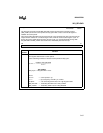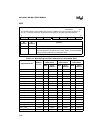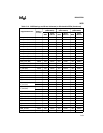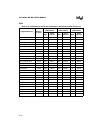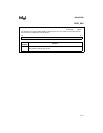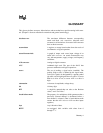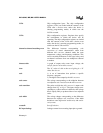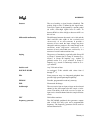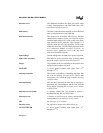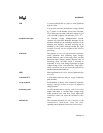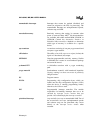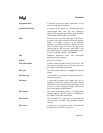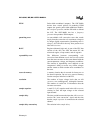
Glossary-1
GLOSSARY
This glossary defines acronyms, abbreviations, and terms that have special meaning in this man-
ual. (Chapter 1 discusses notational conventions and general terminology.)
absolute error The maximum difference between corresponding
actual and ideal code transitions. Absolute error
accounts for all deviations of an actual A/D converter
from an ideal converter.
accumulator A register or storage location that forms the result of
an arithmetic or logical operation.
actual characteristic A graph of output code versus input voltage of an
actual A/D converter. An actual characteristic may
vary with temperature, supply voltage, and frequency
conditions.
A/D converter Analog-to-digital converter.
ALU Arithmetic-logic unit. The part of the RALU that
processes arithmetic and logical operations.
assert The act of making a signal active (enabled). The
polarity (high or low) is defined by the signal name.
Active-low signals are designated by a pound symbol
(#) suffix; active-high signals have no suffix. To assert
RD# is to drive it low; to assert ALE is to drive it
high.
attenuation A decrease in amplitude; voltage decay.
bit A binary digit.
BIT A single-bit operand that can take on the Boolean
values, “true” and “false.”
break-before-make The property of a multiplexer which guarantees that a
previously selected channel is deselected before a
new channel is selected. (That is, break-before-make
ensures that the A/D converter will not short inputs
together.)
byte Any 8-bit unit of data.
BYTE An unsigned, 8-bit variable with values from 0
through 2
8
–1.



